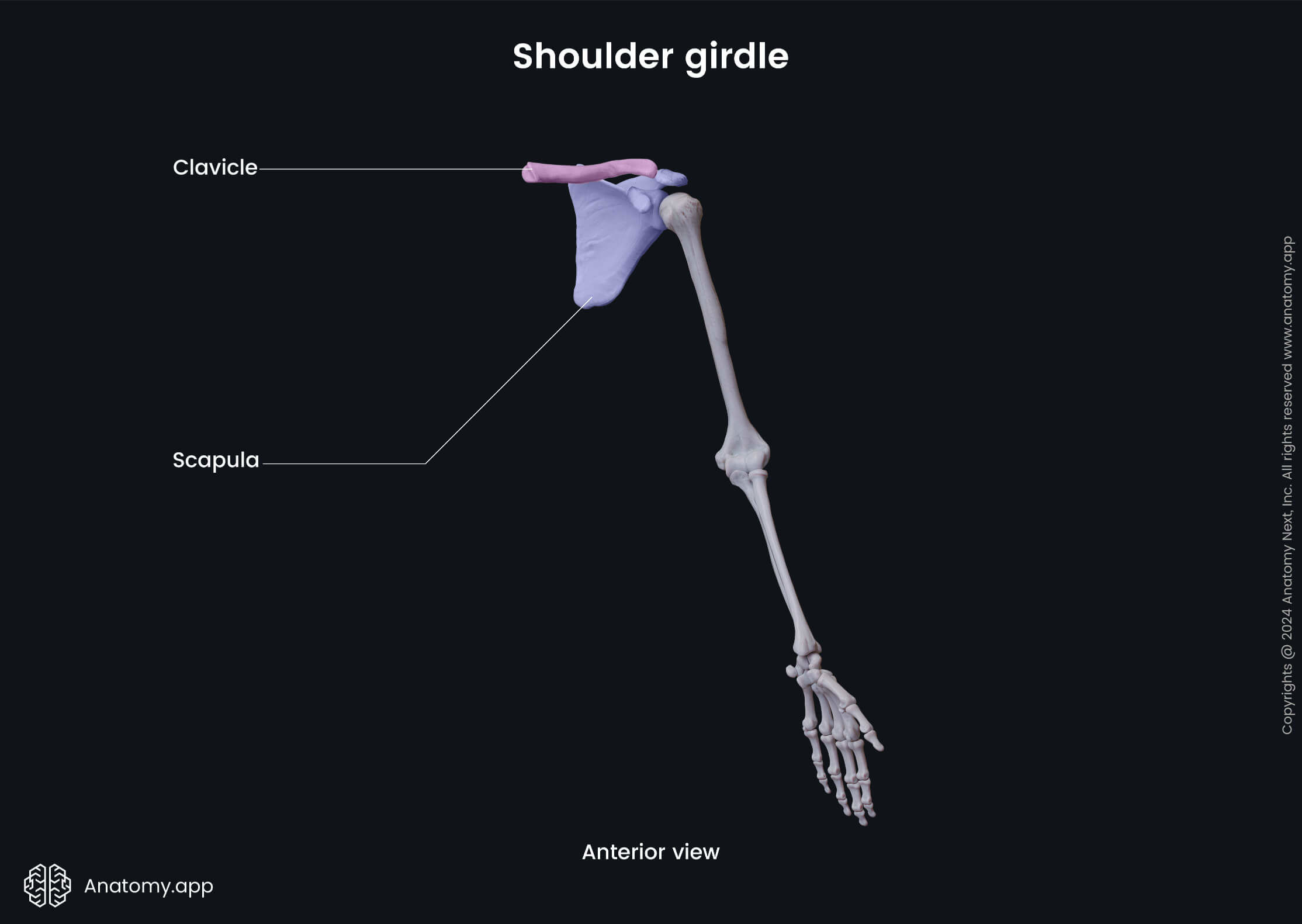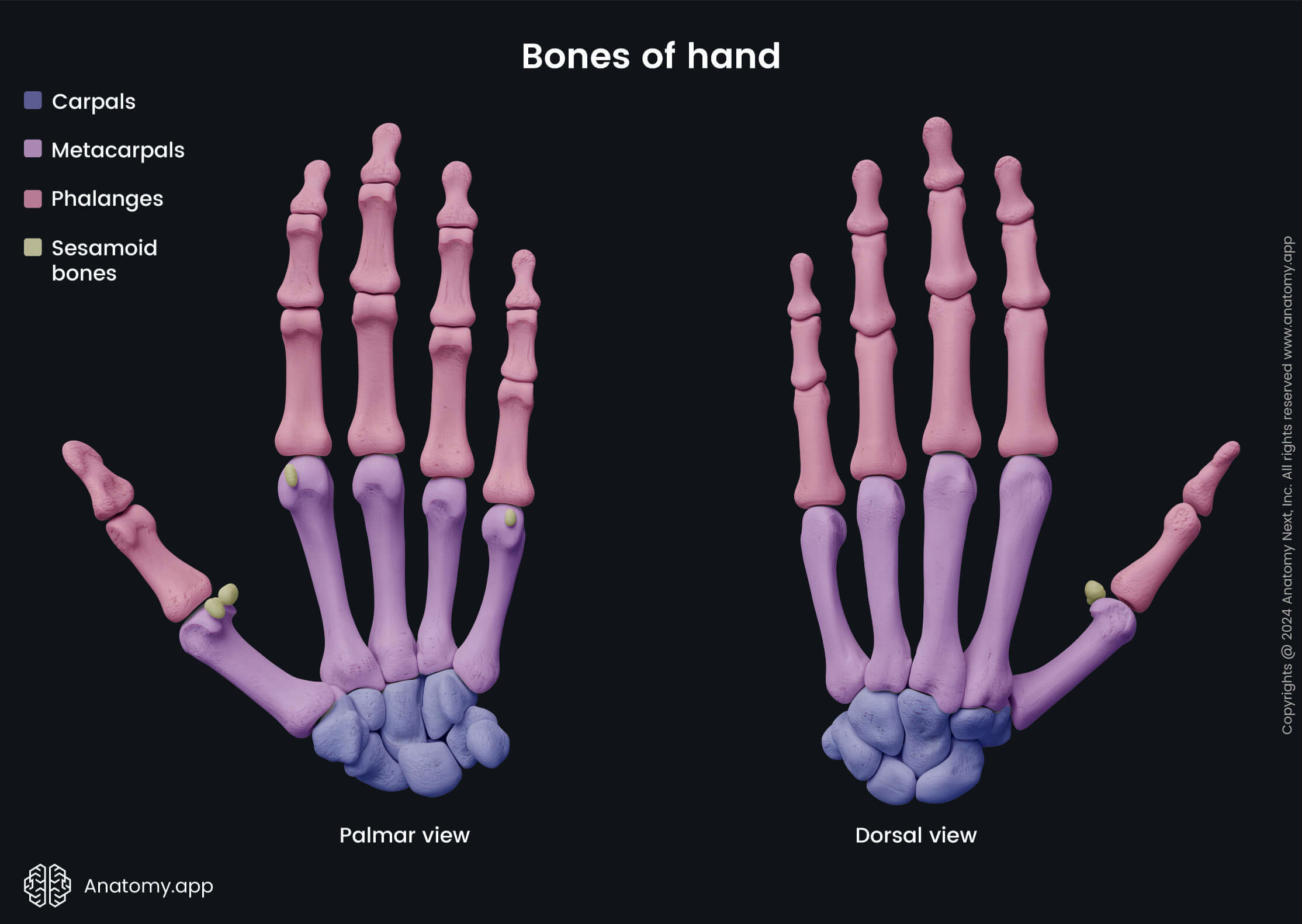- Anatomical terminology
- Skeletal system
- Skeleton of trunk
- Skull
-
Skeleton of upper limb
- Bones of shoulder girdle
- Humerus
- Bones of forearm
- Bones of hand
- Skeleton of lower limb
- Joints
- Muscles
- Heart
- Blood vessels
- Lymphatic system
- Nervous system
- Respiratory system
- Digestive system
- Urinary system
- Female reproductive system
- Male reproductive system
- Endocrine glands
- Eye
- Ear
Skeleton of upper limb
The skeleton of the upper limb or upper extremity is formed by the bones of the shoulder girdle and bones of the free upper extremity. The latter is subdivided into three parts - upper arm, lower arm or forearm, and hand.

Shoulder girdle
The shoulder girdle connects the skeleton of the upper limb with the axial skeleton. It is formed by two bones on either side of the body - clavicle and scapula. The shoulder girdle and free upper limb connect at the shoulder or glenohumeral joint.

Free upper extremity
The upper aspect of the free upper extremity is formed by the upper arm that consists of a single bone called the humerus. The middle part of the free upper extremity is known as the forearm, and it is made of two parallel lying bones - radius and ulna.

The terminal part of the free upper extremity is the hand, which is formed by three different groups of bones - carpal bones, metacarpal bones and phalanges. Sometimes the hand contains some extra bones called the sesamoid bones.
